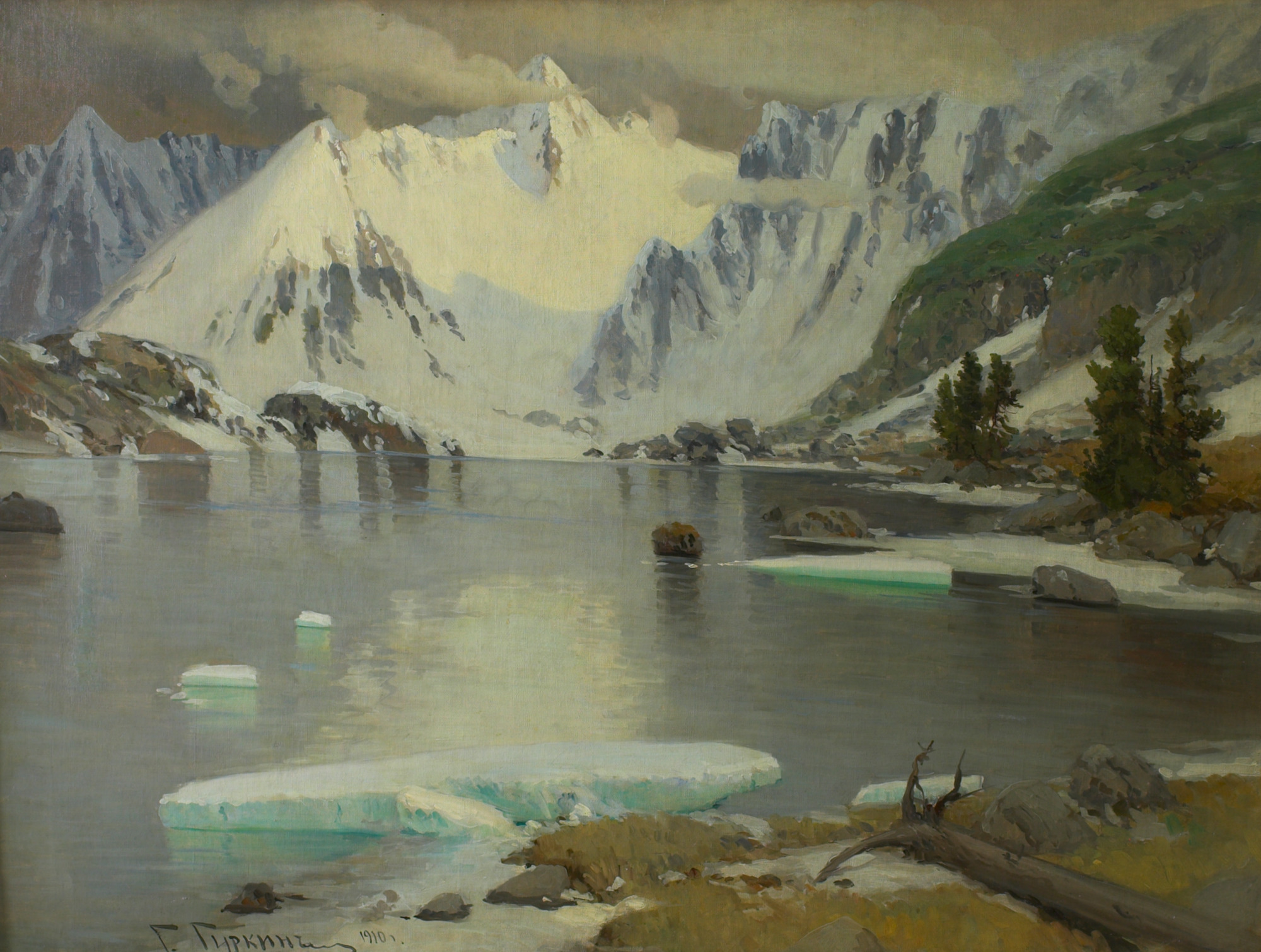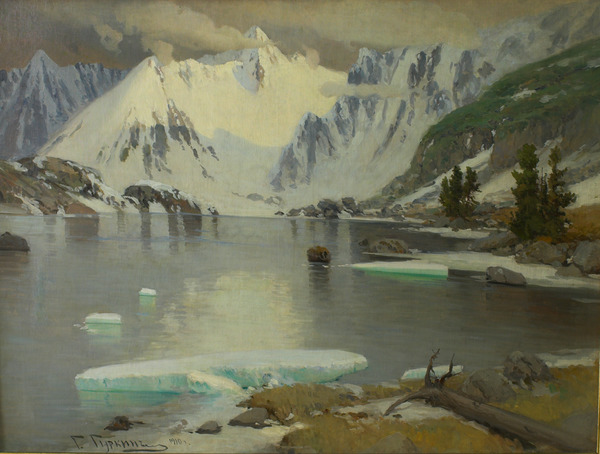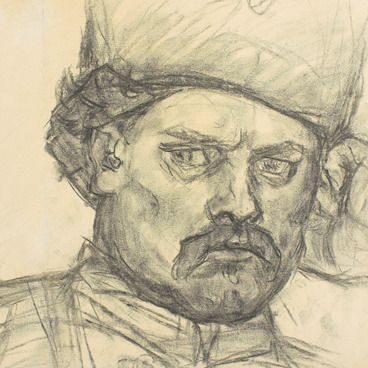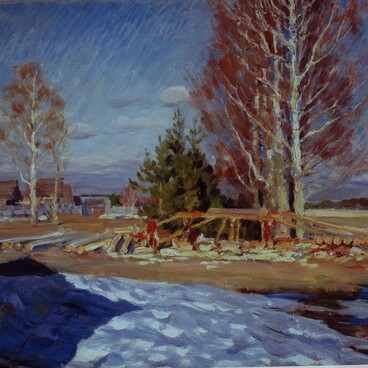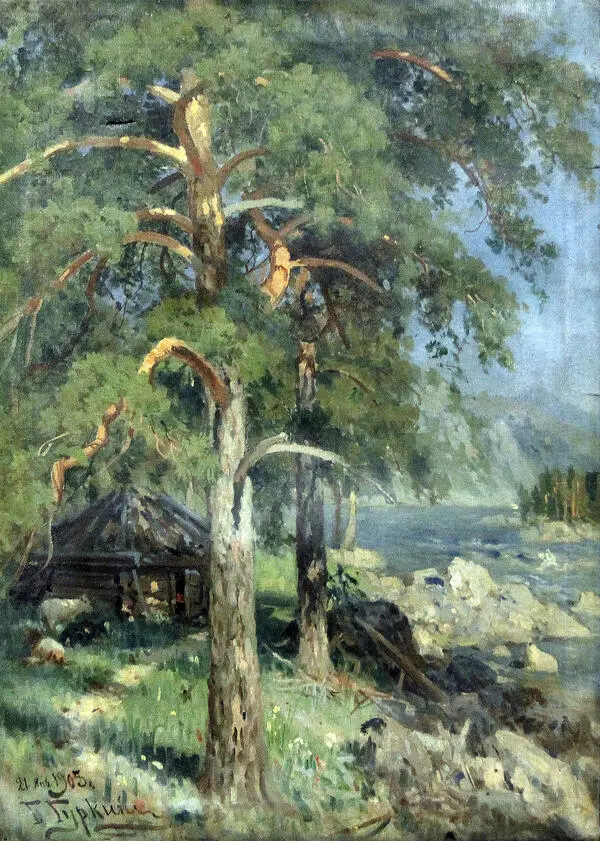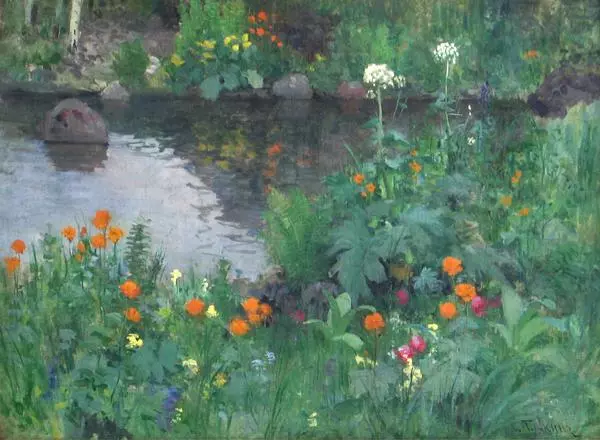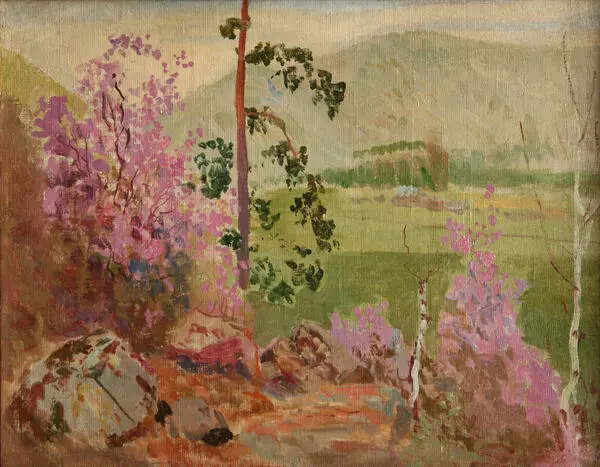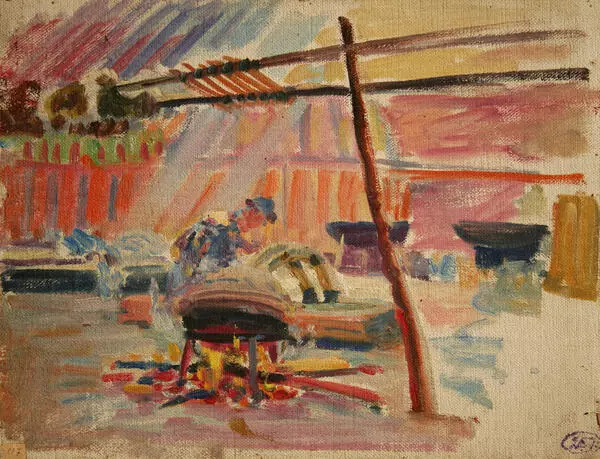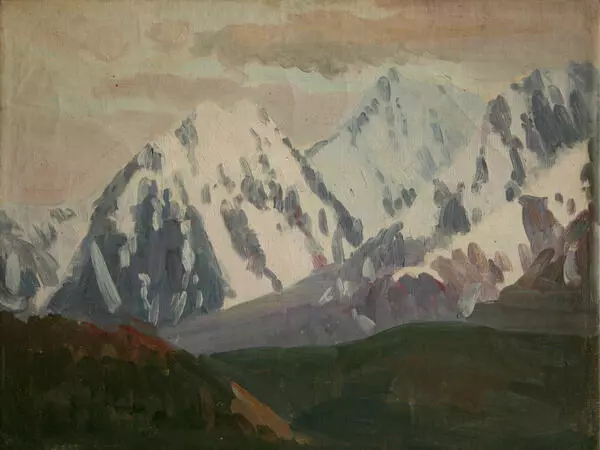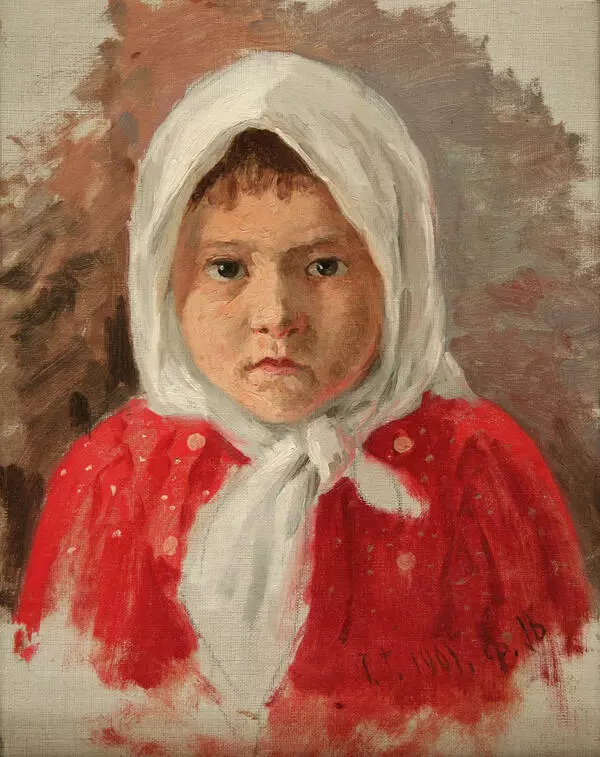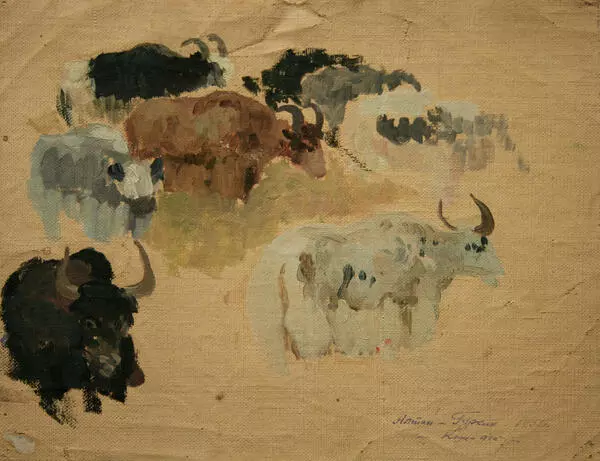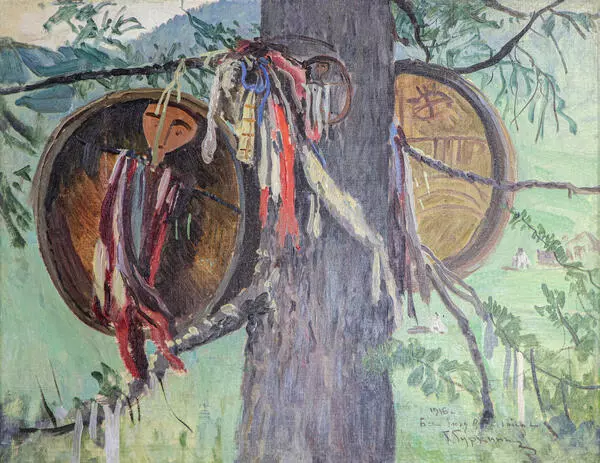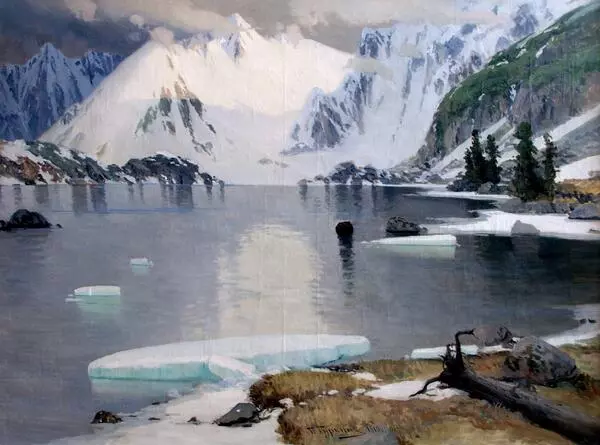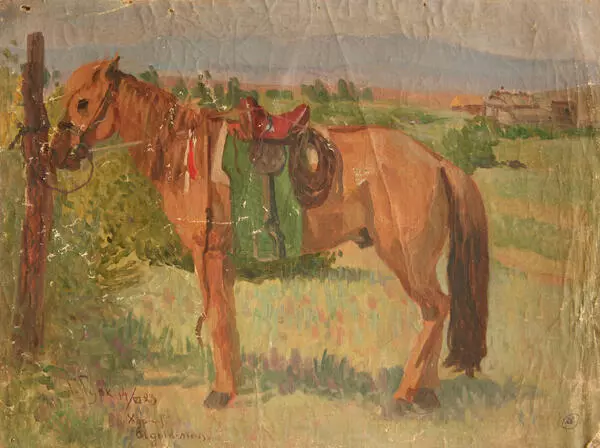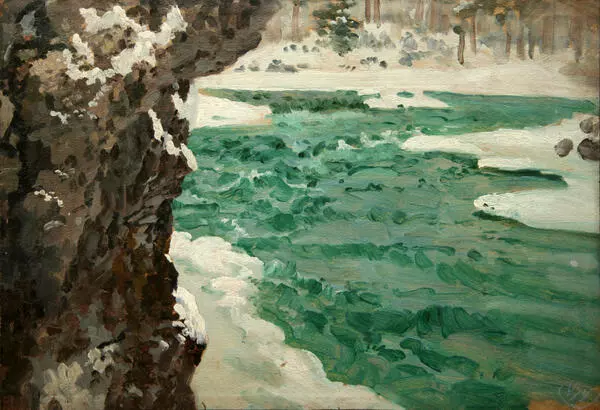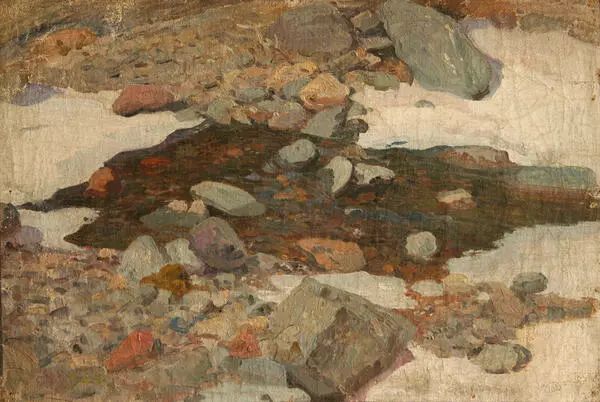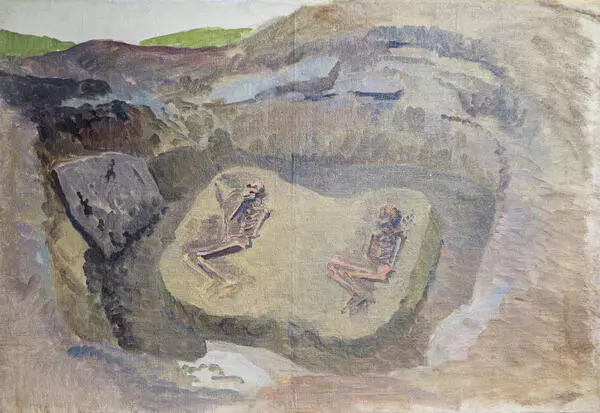Grigory Choros-Gurkin was a painter from Altai. He graduated from the St. Petersburg Academy of Arts, his teacher was Ivan Shishkin, and Grigory was the first professional artist among the indigenous peoples of Siberia. He also became the first Altai ethnographer, folklorist and writer.
Grigory Gurkin was a native Teleut, from the Choros family. He was born in 1870 in the village of Ulala (today Gorno-Altaysk, the city in the south of Western Siberia) in a Christian family. In 1878, he was sent to study in the icon painting class of the school at the Altai orthodox mission, and later, with the help of Ivan Shishkin, he became a non-credit student at the Academy of Arts. Gurkin did a lot of studied into the culture and life of the Altai indigenous peoples and made thousands of drawings dedicated to this topic.
Of all the paintings by Grigory Gurkin, the most famous are landscapes. In his best paintings — ‘Khan-Altai’, ‘Crown of Katun’, ‘Altai’, ‘Thawing weather’, ‘Katun in the spring’ — the painter wanted to create a collective image of the harsh and majestic nature of Altai, his native land.
It took quite long for Grigory Gurkin to paint his well-known and recognized painting ‘Lake of mountain spirits’, and he went to the mountains many times. In this work, he captured the image of the pristine Altai nature, untouched by civilization.
The foreground makes the landscape convincing and expressive — contrasting shapes and colors of a green-blue rock of ice, faded brown grass and a bluish-brown fallen tree with exposed roots. The silent calmness and coldness of the lake are emphasized by the smooth bluish-gray surface of the water. In the background, the deserted shores come together, rising up to form strict lines and shapes. And a bright band of mountain peaks reflected in the water seems to show the way to the refuge of spirits.
The artist presented the painting at an exhibition in Tomsk in 1910. The canvas was a huge success and became so popular that the artist had to make several copies with the same name, which are today exhibited in the State Russian Museum, the Museum of the East, the Museum of the Altai Territory, the Tomsk Art Museum, the Irkutsk Regional Art Museum named after V. P. Sukachov The landscape painting from the collection of the Krasnoyarsk Art Museum named after V. I. Surikov was owned by the Krasnoyarsk merchant Pyotr Gadalov. The painting decorated the interior of the mansion, where the Museum is located today, already during the life of its owner.
Grigory Gurkin was a native Teleut, from the Choros family. He was born in 1870 in the village of Ulala (today Gorno-Altaysk, the city in the south of Western Siberia) in a Christian family. In 1878, he was sent to study in the icon painting class of the school at the Altai orthodox mission, and later, with the help of Ivan Shishkin, he became a non-credit student at the Academy of Arts. Gurkin did a lot of studied into the culture and life of the Altai indigenous peoples and made thousands of drawings dedicated to this topic.
Of all the paintings by Grigory Gurkin, the most famous are landscapes. In his best paintings — ‘Khan-Altai’, ‘Crown of Katun’, ‘Altai’, ‘Thawing weather’, ‘Katun in the spring’ — the painter wanted to create a collective image of the harsh and majestic nature of Altai, his native land.
It took quite long for Grigory Gurkin to paint his well-known and recognized painting ‘Lake of mountain spirits’, and he went to the mountains many times. In this work, he captured the image of the pristine Altai nature, untouched by civilization.
The foreground makes the landscape convincing and expressive — contrasting shapes and colors of a green-blue rock of ice, faded brown grass and a bluish-brown fallen tree with exposed roots. The silent calmness and coldness of the lake are emphasized by the smooth bluish-gray surface of the water. In the background, the deserted shores come together, rising up to form strict lines and shapes. And a bright band of mountain peaks reflected in the water seems to show the way to the refuge of spirits.
The artist presented the painting at an exhibition in Tomsk in 1910. The canvas was a huge success and became so popular that the artist had to make several copies with the same name, which are today exhibited in the State Russian Museum, the Museum of the East, the Museum of the Altai Territory, the Tomsk Art Museum, the Irkutsk Regional Art Museum named after V. P. Sukachov The landscape painting from the collection of the Krasnoyarsk Art Museum named after V. I. Surikov was owned by the Krasnoyarsk merchant Pyotr Gadalov. The painting decorated the interior of the mansion, where the Museum is located today, already during the life of its owner.
